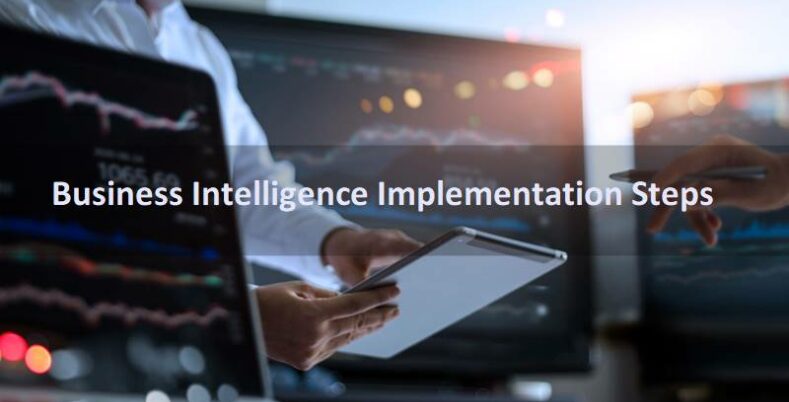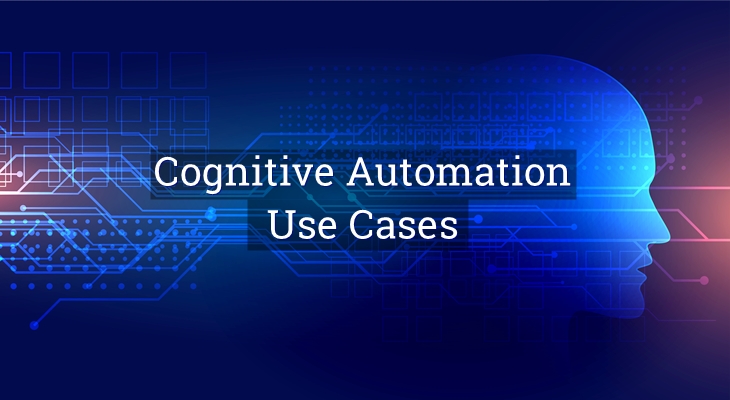Importance of Business Intelligence
A highly personalized, customer-driven, and digital-first approach has resulted in a new-age business approach, which requires a business analysis with defined metrics. Hence having a business intelligence strategy has become a necessity for organizations. Business intelligence, if properly applied, can give you an accurate analysis that can help you to accelerate & grow your business. It can help you to understand the customer acquisition cost, customer buying patterns & cycles, and help you to make the decisions based on the analysis. A proper business intelligence implementation will not only help you understand more about your customers, but it will also help you to increase your sales by many folds. So, what are the steps that can lead to a successful business implementation strategy? Let’s take a look at the key steps for business intelligence implementation.
Business Intelligence Implementation Steps
- Educate the Staff & Stakeholders
- Define the Objectives
- Set the Key Point Indicators
- Form a Team
- Find out the best software
- Create the Execution Strategy
- Define the tasks & Delegate the Resources
- Create the Data Cleansing, Data Processing, Data Analysis Process
- Implement the Process as a Proof of Concept or a Pilot
- Implement the changes to meet the KPIs
It's a human tendency to resist the change, and the first step to minimize the resistance is through education.
Educating the staff & stakeholders alike requires a lot of effort as it requires a significant amount of expenditure from the stakeholders' perspective and switching to new technology from the staff's perspective.
You need to educate the stakeholders and the staff on how the business intelligence implementation will benefit the individuals and also the organization.
Also, you need to have a clear plan on how you are going to achieve the objectives through the BI system.
The second step in a successful business intelligence implementation is to clearly define the objectives you seek to achieve through the business intelligence system.
Having laid out objectives will not only help your stakeholders to understand the expectations from the tool, but it will also help you to strategize the plan of action easily.
Once you have defined the objectives to implement the business intelligence system, the next step is to define the key performance indicators (KPIs) clearly.
They will help you to make effective decisions to achieve your objectives. These indicators should be measurable, in-line with your objectives, and the key to achieving your goals.
So for example, if you want to increase your revenue by 20% over the next quarter through BI, you need to set KPIs like number of inquiries, the number of POC signups and the number of leads in the sales funnel and their respective stages in the funnel.
Setting up the engagement metrics related KPIs like the number of likes to your page, or the number of retweets of your posts will not help you to achieve your goal, which is to increase the revenue by 20% over the next two quarters.
The next step in this plan is to form a team of people who will perform tasks like data cleansing, data input, data processing, and data analytics.
This is one of the most important steps in a successful BI implementation as this team will be executing the ideas.
The next important step in the process of business intelligence implementation is to find out the optimal software for each task. You also need to find out alternative software for each task.
For example, you may want to use OpenRefine, or Trifacta Wrangler based on your requirements for the data cleansing process.
Similarly, you may want to use Flink or Pentaho for data processing purposes. Also, you need to define the BI analytics tool(s) you are planning to use in the future. The popular BI tools include IBM Cognos, Power BI, Tibco, Tableau, etc.
The selection of tools will vary upon the requirement and budget. But, you need to understand the optimal tool for each process.
Once you have a team, resources, and software in place, you need to focus on the execution strategy for a successful business intelligence implementation process.
The execution strategy involves determining whether you want a Top-Down Approach which is more of a strategic approach or a Bottom-Up Approach which is more of a tactical approach.
In the Top-Down approach, you identify the goals first and then communicate with the team how those goals will be measured.
In this approach, the goals and key metrics are defined, but the methods to achieve them aren't necessarily explained.
But, in the case of the Bottom-Up Approach, you identify the business problem and go for a solution for that particular problem to achieve the goals for that particular entity.
According to Enterprise BI Architect Kay Van De Venter, Bottom-up approach is like building a room at a time in the house when you have the overall idea of how the house will look like.
Once you have formed a team, software, and the strategic execution approach then you need to define the tasks which the teams will execute.
And then, you need to delegate the tasks to the respective teams and allocate the resources to fulfill the task.
Create the Data Cleansing, Data Processing, Data Analysis Process
Now that you have all the tools, strategy, and the team in place, you need to create a data cleansing process with the chosen tool(s).
There is a huge amount of data that lacks the quality to achieve your goals, and you need to clear out this ineffective database and create a database with high quality.
You also need to ensure that there are checkpoints to evaluate the data quality at the set intervals. Having an effective data cleansing process enhances your chances of achieving your goals.
Similarly, once you have clean data, you need to create data processing techniques. It involves creating a roadmap for data processing and improving the quality of the responses and query resolution time.
Then, you need to integrate the BI analytics tools like Power BI, Cognos, or Tableau to understand the user behavior insights.
Implement the Process as a Proof of Concept or a Pilot
Once you have these processes ready, you need to implement them for a single process as a proof of concept or a pilot.
Once you have sufficient data to understand the impact of BI on your business., then this strategy will help you analyze whether you are meeting the KPIs, or if you are lagging behind them.
If you are lagging behind the pre-defined KPIs, you need to understand the reasons behind it. And then again you need to modify and optimize your strategy to achieve those KPIs.
Implement the changes to meet the KPIs
Now that you have implemented the changes based on the insights received from the pilot; run another pilot to understand how much of the gap you have covered between these two pilot runs.
This is a continual process, and it needs optimization at every stage.
We recommend that once you have a couple of pilots and their results with you, you can go for a phased implementation approach across all the other processes.
We hope these steps will help you to implement a successful business intelligence process!!!
You May Also Like to Read:
Role of Business Intelligence in the Healthcare Industry
7 Keys to a Successful Business intelligence Strategy
Staff Augmentation Vs. Project Outsourcing: Understanding the Difference
Current trends in Business Intelligence and Analytics
Business Intelligence Tech Trends and Real-World Applications





